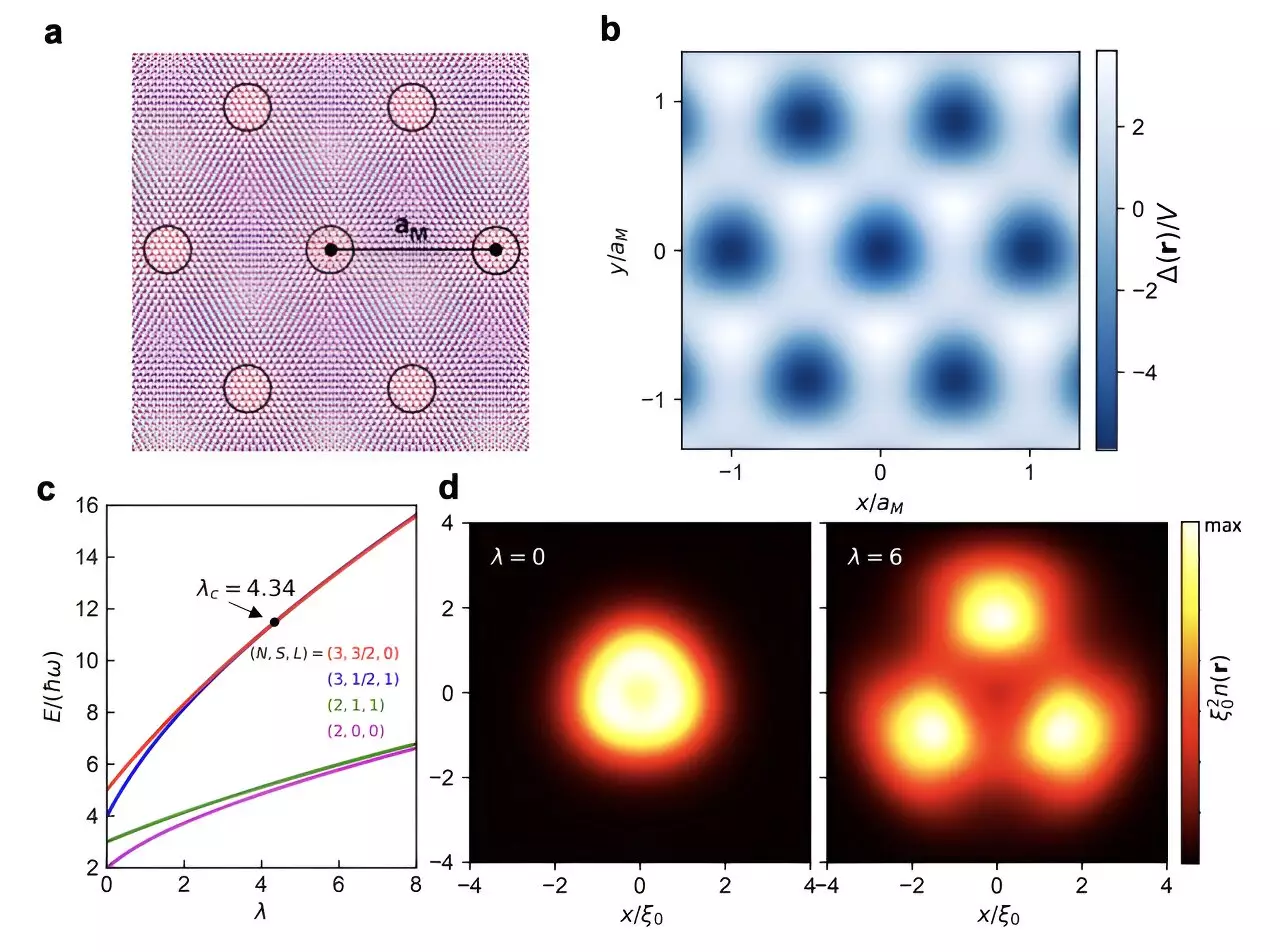Semiconductor moiré superlattices have recently garnered significant attention in the field of quantum physics. These material structures, composed of artificial atom arrays arranged in a moiré configuration, offer high tunability and exhibit strong electron interactions. Researchers at Massachusetts Institute of Technology (MIT) have recently conducted a study to further explore these materials and delve into their underlying physics. Their findings, published in Physical Review Letters, introduce a novel theoretical framework that could advance the understanding of large-period moiré superlattices with weakly interacting electrons residing in different potential wells.
One of the primary advantages of semiconducting moiré superlattices is their ease of manipulation in experimental settings. Physicists can readily control the electron density within these structures to alter the properties of their many-electron ground state. While previous studies have mostly focused on the case of one or fewer electrons per moiré unit cell, the researchers at MIT decided to explore the multi-electron regime in search of new phenomena.
Challenges in Predicting Multi-Electron Behavior
Predicting the behavior of multi-electron materials poses significant challenges due to the presence of competing energy scales within these systems. Kinetic energy favors an electron liquid state, while interaction and potential energy favor an electron solid state. Overcoming these challenges and studying large-period moiré systems with weakly coupled electrons residing in different potential wells required the development of a new theoretical framework.
Theoretical Framework for Moiré Superlattices
The theoretical framework introduced by the MIT researchers focuses on the behavior of individual atoms within the moiré superlattice. Despite its relative simplicity, this approach offers insights into various quantum physics phenomena. Using this framework, the researchers uncovered new physics that could be observed in multi-electron semiconductor-based moiré superlattices.
Wigner Molecules and Emergent Kagome Lattice
At a filling factor of n=3, where each moiré atom in a superlattice contains three electrons, Coulomb interactions were found to lead to the formation of a “Wigner molecule.” Additionally, under specific circumstances where the size of these Wigner molecules is comparable to the moiré period, they can arrange themselves into a unique structure known as an emergent Kagome lattice. These self-organized electron configurations offer fascinating possibilities for further exploration in follow-up studies.
The self-organized electron configurations discovered in this study could serve as inspiration for other physicists, providing them with a new realm to study charge order and quantum magnetism. Conventional materials seldom exhibit the intriguing phenomena observed in large-period moiré superlattices. The most significant insight gained from this work is the identification and experimental confirmation of Wigner solids at special filling factors.
Future Directions
The researchers at MIT plan to delve deeper into the quantum phase transition between Wigner electron solids and electron liquids. By studying this transition, they aim to unravel novel phenomena that may arise and further enhance the understanding of the underlying physical processes within semiconductor moiré superlattices.
The study conducted by MIT researchers offers valuable insights into large-period moiré superlattices and their ability to exhibit unique quantum physics phenomena. The development of a new theoretical framework and the discovery of Wigner molecules and emergent Kagome lattices opens up exciting new avenues for exploring correlated electron states and studying quantum magnetism in previously uncharted territories. With continued advancements in this field, researchers can unlock the full potential of semiconductor moiré superlattices, paving the way for technological breakthroughs and enhancing our understanding of quantum physics.


Leave a Reply